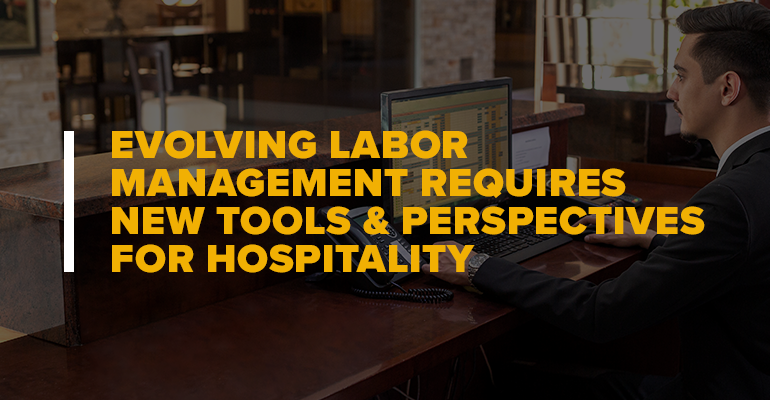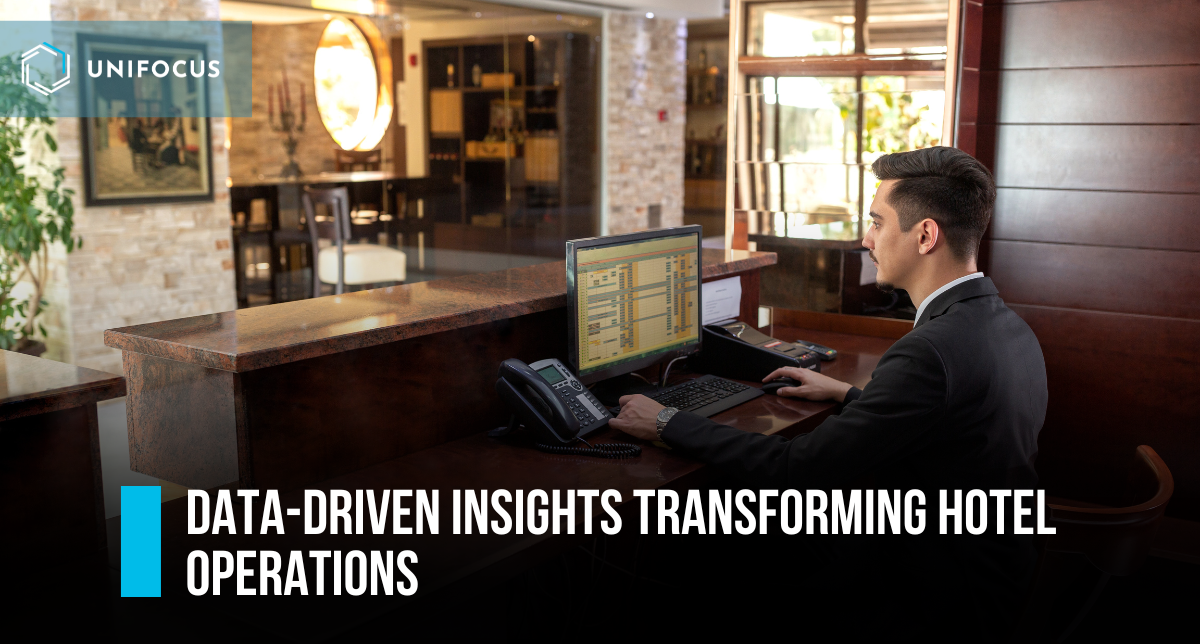Change is constant – even in hospitality. Just when you think you have it figured out, guest expectations do a 180, the labor market clenches its fist, and revenue growth flattens like a tabletop. And as you know, managers don’t need any more variables to keep them on their toes – daily operations alone are more than enough.
In an industry that’s traditionally been slower to embrace technology, hospitality managers often feel like they’re trying to cut ribeye with a spoon. In other words, many feel like they lack the tools and processes needed to effectively manage their people in an increasingly challenging environment.
Labor Management Insights from Industry Leaders
This is a topic we examined in our recent FocusED article, Redefining Labor Management: Lessons from Hospitality Leaders. In a revealing conversation with leadership from three hospitality companies, we peek behind the labor management curtain of three forward-looking hoteliers that have not only been able to survive the persistently tight labor market, but thrive in it.
The article will undoubtedly leave you looking in the mirror to see how your organization compares to these industry leaders, in particular, the way they leverage technology to manage their labor. It’s a different perspective from the industry’s roots. One that both recognizes the need for change, and embraces the tools that drive that change.
Embracing Change in Hospitality
When it comes to even the most transformational technologies, there is a fear of change throughout the industry. Fear that veering too far off the beaten path will negatively affect relationships with staff or the guest experience.
The truth of the matter is, the forces driving effective labor management in hospitality have fundamentally changed in the last decade. Guest expectations for service have evolved in many areas, as have the attitudes of today's hospitality workers. When it comes to managing staff, whether in a hotel, restaurant, hospital, or retail location, what’s old isn’t new again. Outdated concepts only become more antiquated with time. With labor costs outpacing revenue growth, hospitality companies that continue to drag their feet in embracing labor management changes – particularly more advanced technologies and updated labor standards – put profitability at risk.
Advanced labor management solutions are available, and solution providers certainly aren’t keeping potential results a secret. In fact, UniFocus recently published a case study demonstrating how optimized labor management yielded an 8:1 ROI and 3.5x greater productivity for DiamondRock properties. And those results are the norm, not the exception.
Labor Management Truths in the Digital Age
To compete effectively in this labor market, hospitality owners and operators must accept three concepts that fly directly in the face of old-fashioned processes and procedures. From there, it’s just a matter of finding the solutions that can transform their labor management into a flexible, continually improving discipline.
Simply Cutting Costs Isn’t the Answer
When margins erode from the toxic combination of plummeting revenue growth and skyrocketing costs, the first impulse is usually to cut costs. And while that might be a natural reaction, rampant cost-cutting sacrifices long-term health for short-term – and fleeting – gain. If eliminating staff leaves you incapable of providing a satisfying guest experience, then you’re just robbing Peter to pay Paul. And Peter won’t be happy about that when intent to return and recommend plummets. If you render yourself unable to satisfy your guests, you might as well just call it a day.
Labor Management vs. Labor Optimization
Labor management, as a term, doesn’t necessarily invoke images of an agile workforce that can turn on a dime when demand shifts. Instead, it’s more representative of other industries like manufacturing, for instance, that have set production quotas and rigid standards. Rather than “managing” labor, hospitality is better served optimizing it, using technology and precise standards to forecast demand, automate scheduling, and give its managers the ability to draw maximum productivity from staff.
Engaged Employees Let You Accomplish More With Less
The nature of employment isn’t what it used to be. People simply don’t look at their jobs or companies as a decades-long relationship anymore. That notion is even more prevalent in an industry like hospitality, where turnover rates are well above those from other sectors. Therefore, managers must get the very most from every employee, and much of that stems from employee engagement levels. When an employee is engaged with their work, coworkers, and employer, they’re motivated to succeed and strive for a mutual set of goals and vision. Employee engagement lets managers do more with less.
Labor management has changed. Old rules don’t apply anymore, and hospitality companies that don’t keep pace run the genuine risk of permanently falling behind the competition. But new challenges don’t have to be daunting as long as owners and operators equip their managers with the right tools. As the industry experts discuss in our recent edition of FocusED, optimized labor performance lets you effectively manage your people and protect your margins, no matter how challenging the environment becomes.
Know someone trying to solve their workforce management problems? Share this post them! Or, if you have questions comments, leave them below.







